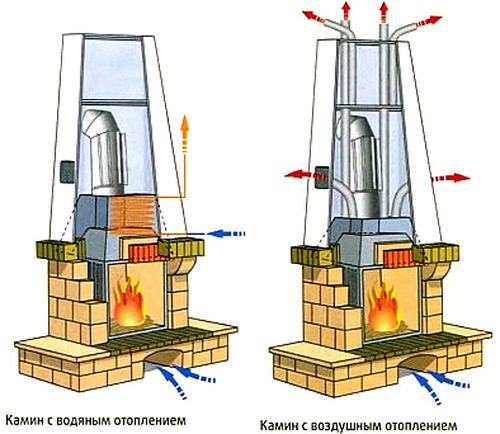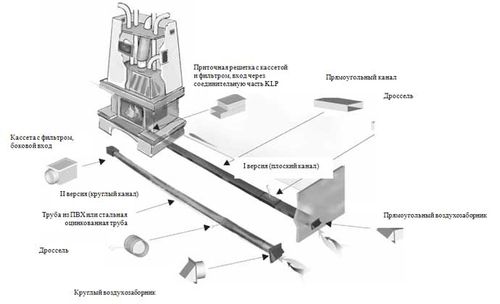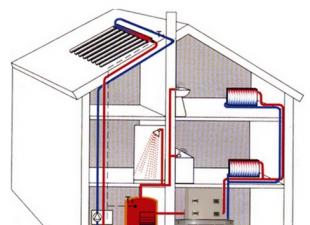We always associate fireplaces with high aristocratic premises: evenly crackling logs, a rocking chair nearby, reflections of fire on the walls ... At the same time, they forget that the efficiency of a traditional fireplace is rather low, and in its traditional design, such a heating unit does not really fit the features domestic climate.
And why, in fact, a fireplace can not effectively heat the room in our conditions? It is enough to simply change the usual heat transfer scheme - instead of radiative, implement a convection one, in which heat will spread throughout the room due to air flows:
- ascending from the fireplace insert to the top of the room;
- descending - colder air heading towards the furnace.

It is on this principle that a fireplace with air heating operates.
What are the advantages of heat exchange for a working air fireplace
Consider this issue from the point of view of efficiency and stability of the air fireplace.
- A traditional fireplace radiates heat as long as the fire burns in it. Therefore, such a unit will be quite voracious in terms of fuel consumption. The addition of additional air volume to the fireplace insert improves the combustion process and ensures its greater stability. As a result, the fuel consumption of fireplaces with air heating is reduced by 15-20%.
- To remove the products of combustion in houses with fireplace heating, it is necessary to have smoke ducts. If, in addition to arranging traditional chimneys and pipes, special channels were laid into which air heated as a result of convection processes would enter, then they would be an additional source of temperature increase in the room due to heat transfer from hot walls. The air temperature in them can reach 150-200°C. Thus, an additional heating effect is obtained.

Thus, air fireplaces make it possible to increase the temperature in the room in all possible ways:
- radiation - from an open fireplace insert;
- convection - due to the mixing of air flows in the room;
- heat transfer - when the walls of the room are heated by hot air moving through special air channels in the walls of the house.
Naturally, the development of an air heating system using a fireplace as a heat source should be developed and carried out even in the process of building an individual house, since this is due to the thickness of the walls and the peculiarities of their construction.
How is the home heating system implemented with fireplaces with air heating
The most successful technological solutions and schemes for such heating are shown in the photo. Regardless of the individual technical features, their essence is that in order to intensify the processes of air exchange, it is necessary to install fans.
Indeed, with natural convection, the desired effect can be achieved only due to the difference in air densities - cold and heated. As the room warms up, the difference in these indicators will gradually decrease, and therefore the efficiency of natural convection will also decrease. According to the scheme of artificial convection, the regime of intensive air exchange will no longer be determined by the thermophysical characteristics of the air, but by the direction of its flows.

The place where such fans are installed will also matter - they must supply cold air from outside, and not from inside the heated room. Otherwise, the reverse process is possible, when the heated air from the fireplace, with the smallest particles of soot and other incompletely burned solid fuel components, will enter the room, which will significantly worsen its microclimate. Reviews tell about failures associated with incorrect installation of fans.
 budivel.ru About the insulation and heating of the house.
budivel.ru About the insulation and heating of the house.


